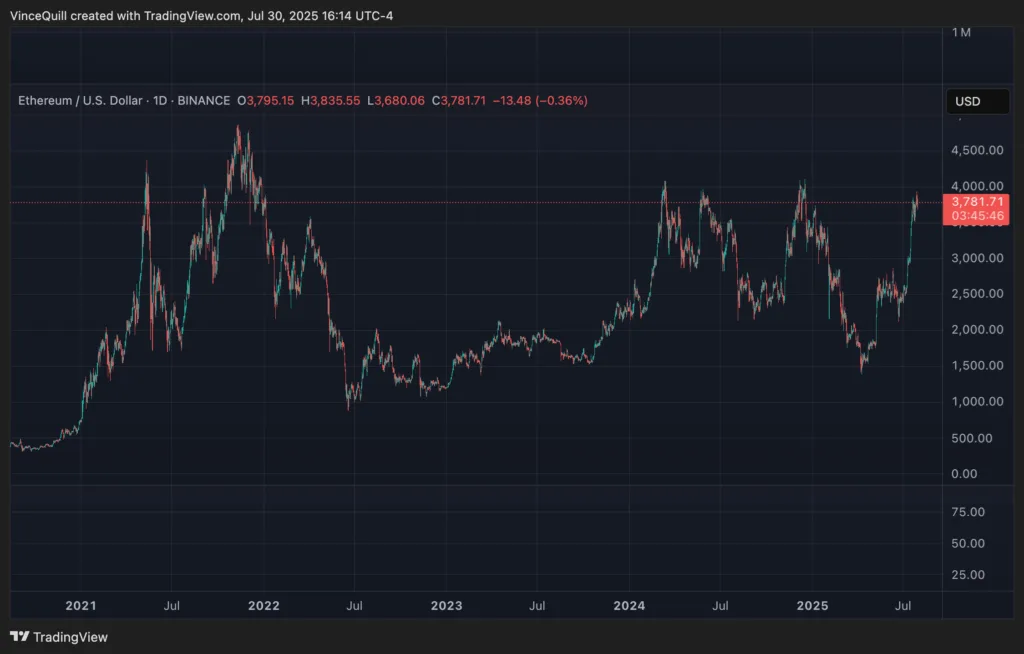- Bitwise CIO Matt Hougan explains how Ethereum treasury companies are presenting ETH in a format that traditional investors understand.
- Ethereum’s growing institutional interest signals its shift from a niche asset to a major financial tool.
- Hougan warns ETH treasury companies to manage debt carefully to avoid financial risks.
Ethereum has faced difficulties in presenting a clear value proposition for traditional investors, but according to Matt Hougan, Chief Investment Officer at Bitwise, this problem is being addressed through Ether treasury and holding companies. These companies have packaged Ethereum in a more familiar format for traditional financial systems, making it easier for institutional investors to understand its potential.
Hougan explained that for years, Wall Street struggled to determine whether Ethereum should be viewed as a store of value, a revenue-generating asset, or something else entirely. But when a company takes billions of dollars worth of ETH and stakes it, it generates earnings, providing a much clearer narrative for investors accustomed to equity-based earnings models.
Ethereum gains institutional traction
The rise in interest from institutional investors marks a significant change for Ethereum, shifting it from a niche crypto asset to one that is gaining traction among large financial institutions. What was once seen primarily as a tool for the crypto community is now being viewed by institutional investors as a legitimate and valuable asset.
Newsletter
Get weekly updates on the newest crypto stories, case studies and tips right in your mailbox.
This shift is particularly important given Ethereum’s growth over the past 10 years since its mainnet launch, and the growing acceptance from major players in finance. Ethereum’s increasing adoption highlights its transition into a well-regarded investment opportunity.

Source: TradingView
Risks in the Ether treasury model
Despite the positive outlook, Hougan did warn that ETH treasury companies need to exercise caution, especially when it comes to managing debt and financial risks. Companies that accumulate ETH using equity or corporate bonds as their model need to avoid overleveraging, which could lead to financial issues down the line.
In addition, Hougan pointed to the potential for short-term volatility in Ethereum’s price, which could create problems for companies that are not prepared for price fluctuations. If the market experiences a downturn, these companies may struggle to meet financial obligations if their assets and liabilities are not denominated in the same currency. However, Hougan also clarified that a catastrophic liquidation is unlikely; instead, he believes a slow, managed adjustment of assets is more probable.
A long-term strategy for ETH treasury companies
Despite the risks, Hougan remains positive about the long-term prospects of ETH treasury companies. He emphasized the importance of having a long-term investment strategy, viewing ETH as a hedge against inflation. He also noted that ETH’s increasing institutional adoption will likely continue, providing further stability and growth for treasury companies managing Ether.
Ethereum’s transition into an asset that is more understandable to traditional investors has been accelerated by ETH treasury companies. These companies have helped clarify Ethereum‘s value, drawing in more institutional interest. However, managing risks, such as debt and short-term volatility, will be essential for the continued success of these companies. With proper risk management, Ethereum’s role as an institutional-grade asset is set to grow further in the years to come.













